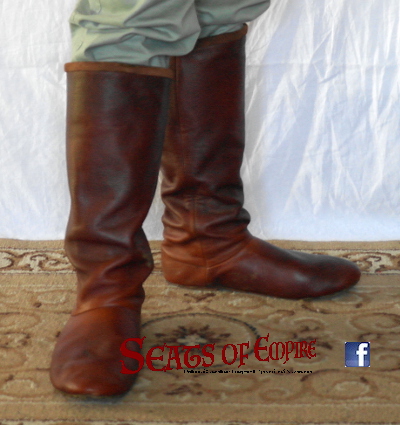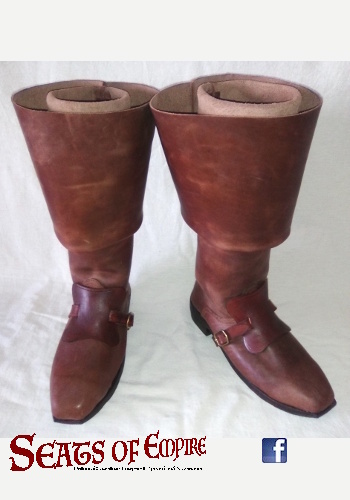Footwear
My first forays into footwear manufacture decades ago was to make character costume boots for Classical Ballet use. Being a keen horseman over the decades, another area of particular interest has naturally been equestrian footwear. I have replicated pieces from Late Antiquity to the nineteenth century.

Late Antique riding boots based upon finds in Egypt. C5th—6th

A style of boot ubiquitous in the Levant by the eleventh century.

Byzantine and Turkish cavalry boots, C11th—12th. Worn here with kamptotouva (padded leggings).

Fifteenth-century European thigh boots.

Late Elizabethan era riding boots based upon a surviving example in the Museum of London.

Bucket-top boots are simply thigh boots with the portion above the knee folded down. C17th—18th.

Gentleman’s top boots, C18th onward.

Hard cavalry boots, C18th—19th.

Military hessian boots were basic black, with the colour of the trim indicting rank. Late C18th—19th.

Dress hessian boots could be in all manner of colours, Late C18th—19th.

Heavy cavalry boots of the C18th, sometimes called “gambados”. These are copied directly from a pair on the International Museum of Leather Craft (IMOLC).
Copyright: Timothy George Dawson 2021, 2024

